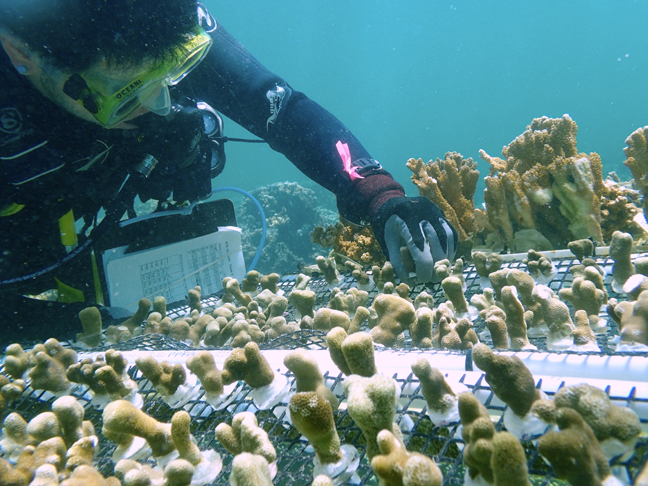Mitigating climate change impacts: What drives thermal resiliency in Hawaiʻi’s coral reefs?
PRINCIPAL INVESTIGATOR: Ruth Gates
Graduate Fellow: Shayle Matsuda

Reef-building corals engineer the reef structure that provides habitat for an incredible amount of biodiversity. These diverse ecosystems generate economic services valued at billions of dollars annually and have profound cultural significance in Hawaiʻi. Despite providing immense ecological, economic, and cultural services, corals are under threat globally from climate change that reflects in marine environments as increases in temperature, acidification, and the frequency and intensity of major storms. Corals depend on intimate relationships, or symbioses, with microscopic algae and microbes (symbionts) that live inside their tissues for survival. Rapid warming of the ocean causes a breakdown in the symbiosis between microalgae and corals and as a result the symbionts are lost from the coral tissues. This loss causes the coral to look visibly pale and this stress response is described as coral bleaching. Since corals depend on the micro algae for food, bleaching leaves the coral vulnerable to starvation and death. Unusually high seawater temperatures caused a mass bleaching in the fall of 2014 in Hawaiʻi, which damaged the reefs. Surveys of corals during this bleaching event showed that some corals bleached, while others next to them remained brown in color and healthy. Framed by this set of observations, this study aims to understand the biology that underpins these differences in response and define features that link to thermal tolerance in corals. Our goal is to contribute new knowledge that improves capacity to predict how coral communities will shift under future climate conditions, that guides decisions that influence the establishment of marine protected areas, and that identifies thermally resilient candidate species that are ideal for use in conservation and restoration projects. Our ultimate goal is to contribute information that optimizes and enhances capacity to manage and conserve Hawaiʻi’s valuable coral reefs.

